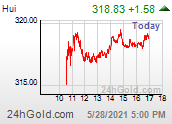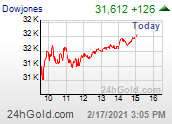New American car purchase becomes adventure
By Dave Felice
Buying an automobile in Michigan isn't much different than in Colorado, but purchasing Chevrolet's newest model where the cars are built adds an interesting and intriguing dimension to getting a new car. And the people who make Chevrolet Sonic are as pleased to be producing the car as I am to own one.
Using advanced techniques and some of the world's largest robotic equipment, members of United Auto Workers (UAW) Local 5960 produce the Sonic subcompact hatchback and sedans, along with a new Buick small car, at the General Motors Orion Assembly Center. The huge production plant is set amid rolling hills and lakes between Detroit and Flint, in the town of Lake Orion (OR-ee-uhn).
I read of GM’s plans for Sonic earlier in the year and was waiting for production to begin. Since I would have needed to order the car for delivery in Denver anyway, I decided to make the trip to Michigan. I ordered a crystal-red Sonic LT hatchback with automatic transmission. I picked up the car at the (Wally Edgar) dealership, less than a mile from the production facility, then drove 1550 miles back to Denver.
 Chevrolet's Sonic is the only subcompact built in the United States. Ford's entry in the market segment, Fiesta, is made in Mexico. All the other cars in this class are produced overseas. GM and the UAW have a new two-tier pay structure designed to make it profitable to produce the cars domestically.
Chevrolet's Sonic is the only subcompact built in the United States. Ford's entry in the market segment, Fiesta, is made in Mexico. All the other cars in this class are produced overseas. GM and the UAW have a new two-tier pay structure designed to make it profitable to produce the cars domestically.As a Steward for Communications Workers of America (CWA) Local 7777 and Delegate of the Denver Area Labor Federation (DALF), it was important for me to purchase a car from an American company, made in the United States by union workers.
Modern production in “car country”
Orion Assembly Center has “the latest and greatest production techniques,” according to Local 5960’s Communications Director Tony Hufford. He explains that the plant was idle for the past year while undergoing complete renovation to take advantage of the newest methods of auto making. Instead of producing just one model at a time, Orion workers can build a Sonic sedan, followed by a Buick Verano and a Sonic hatchback in the same assembly run.
Hufford says there are 1,750 hourly and salaried employees at Orion Assembly, on two ten-hour shifts four days a week. Another 300 third party employees work in the plant on processes which formerly were performed at outside locations. The facility produces about 40 cars per hour. According to Hufford, about 90 percent of the cars are built on outstanding orders from customers and dealers, with the rest being made for dealer inventory. All of the Sonic and Verano vehicles made for North America are produced at Orion Assembly.
Pride in production
Hufford says members of UAW 5960 are proud to be making the cars at Orion Assembly. “It’s what we do; we build quality cars,” he remarks. “The workers love the car (Sonic). It is a significant improvement over small cars of the past. We are pleased to be building this car in the U.S.” The motto of Local 5960 is “Build It Like We Own it” and Hufford says plant workers live by their motto.
He tells me Orion Assembly workers are also gratified to be part of GM’s recovery. “The company is really on the mend and the cars we are building are truly state of the art. We’re continuing the great history of this plant for high quality along with health, safety, and environmental considerations.”
Referring to the innovative two-tier wage scale agreement, he says “We brought production here (to Orion) and we think it’s a new beginning (for the company).” About 60 percent of the Orion workers are Tier One veterans, while the others are Entry Level with a lower starting wage scale.
Hufford says the Sonic has wide appeal because of its smaller size, higher fuel efficiency, attractive styling and features, and smooth handling. “Dealers nationwide are expressing demand,” he says. “Driving the Sonic doesn’t feel like driving a small car.”
Plant workers built my car on November 15. Jeff “Weebie” Webb of UAW 5960 and Orion Quality Operations Manager Carter Sperry did the final inspection before arranging delivery of the car to the Wally Edgar dealership, down the road and around the corner.
President Barack Obama and South Korean President Lee Myung-Bak were the plant in late October to promote a trade agreement. Sperry says GM Chief Executive Dan Akerson also visits Orion Assembly and talks directly with workers.
Plant approaches three decades
General Motors opened Orion Assembly in 1983. The sprawling facility is nestled in the countryside of Oakland County, on land considered unsuitable for agriculture. Originally, trains provided the transportation to and from the facility. Now, almost everything is moved by truck. With the exception of occasionally heavy truck traffic, it’s hard to tell that a major industrial complex sits just beyond the main north-south road through Lake Orion.
Located on 5,000 acres of property, Orion Assembly is 80 acres under one roof. By comparison, the entire property of Elitch Gardens in Denver is 72 acres. An acre is roughly equivalent to a football field.
After General Motors decided to produce the Sonic, engineers and members of the UAW Skilled Trades started rebuilding Orion Assembly in late 2010. The company spent about $545 million dollars upgrading and retooling, putting about 1,000 employees back to work in the Detroit metropolitan area. Every aspect of the sparkling-clean facility was custom built for the latest production technologies with lowest cost and highest efficiency and environmental standards, according to Hufford. He says there is actually enough space in the plant for a second assembly line.
Production of the 2012 Sonic started in third quarter this year. Chevrolet sold about 300 cars nationwide during the first month of sales in August. Through November, about 9,000 Sonic cars had been sold around the country.
Innovative processes
Some suppliers are located right in the assembly plant. Parts and sub-assemblies are delivered to the point they are needed by what’s called the minomi system, using large bins guided by electric tracks in the floor. The cars are assembled like a kit. Each car has a set of assembly specifications and the correct pieces are delivered and installed when required.
 Paint shop specialist Anton Busuttil says Orion Assembly is the first U.S. facility to use the economical “three wet” paint process, eliminating the need for a primer baking oven. Three coats of paint can be applied before a single trip through the oven. While producing a high-quality product, the process reduces assembly space and time, as well as lessening solvent emissions by over 100,000 pounds each year. In addition, the rust-proofing film is thinner than other vehicles while retaining the same or higher quality.
Paint shop specialist Anton Busuttil says Orion Assembly is the first U.S. facility to use the economical “three wet” paint process, eliminating the need for a primer baking oven. Three coats of paint can be applied before a single trip through the oven. While producing a high-quality product, the process reduces assembly space and time, as well as lessening solvent emissions by over 100,000 pounds each year. In addition, the rust-proofing film is thinner than other vehicles while retaining the same or higher quality. New fluorescent lighting at Orion Assembly saves nearly half-a-million dollars. According to published information from General Motors, the plant produces 80 percent less solid waste, uses 20 percent less water, and powers some operations by methane gas from nearby landfills.
The Sonic itself uses high-strength but lighter weight steel to be less costly and more fuel-efficient. Sonic buyers can choose a 1.4 or 1.8 Liter (85 or 110 cu. in) engine. The 1.4L engine is available with an optional turbocharger. GM factories worldwide build the engines.
At some locations along the line, there are “practice cars” set aside where workers can look for new techniques and resolve difficulties.
Auto work part of community
Orion Assembly has a close relation with historic automobiles. Hufford says the plant has produced several models of Buick Riviera and LeSabre; the Oldsmobile Aurora, 88, and 98 models; Pontiac Bonneville; Cadillac DeVille and Brougham; Chevrolet Malibu; and the Pontiac G6.
There are numerous other auto production and supply facilities in the area. Well known locations such as Detroit, Flint, Auburn Hills (Chrysler), Lansing, Pontiac, and Dearborn (Ford) are all within a short drive. The FANUC Automated Robotics Systems used at Orion Assembly are manufactured in nearby Rochester Hills.
Many residents of the Lake Orion area either work at the plant, are retired autoworkers, or have relatives involved in auto production. The new Marriott Springhill Suites hotel, about five minutes from the plant, has a special room rate for autoworkers.
Brand expansion in GM revival
As part of a new age for General Motors, Sonic is a major component in the worldwide expansion of the Chevrolet brand. Sonic is produced and sold under the Chevrolet brand in North America, Europe, and Asia, even in Japan. The Sonic, with right hand drive, is sold as a Holden Barina in Australia and New Zealand. Right hand drive cars are also made for Britain and Ireland, India, South Africa, and Japan. Even though Sonic is a different car than the previous Chevrolet Aveo subcompact, the Aveo name continues to be used in some overseas markets, such as India and Chile.
The Sonic is specifically designed to compete directly with foreign brands such as Honda, Nissan, Suzuki, and Volkswagen. Engineers and designers have melded American features with European and Japanese elements.
While it may not have been intentional, some observers see some retrospective design elements, reminiscent of cars such as the PT Cruiser, Chevrolet HHR, and even London taxicabs. “Sporty,” “jaunty,” and “cute” are adjectives people use often in referring to my Sonic. Almost everyone likes the round headlights. People also like the crystal red color, and the solid way the doors close.
Because of production advancements, GM expects to have a profitable entry in the subcompact market. Sonic has a base price of about $14,500. At present, Sonic is GM’s smallest car available in the U.S. It also gets best gas mileage for a conventionally-powered vehicle. UAW President Bob King was recently quoted as saying the union is committed to the success of the company with a workable business plan that makes sense for everyone.
Chevrolet corporate headquarters has chosen to forego traditional broadcast and print advertising. The company is using more Internet resources, such as social media, e-mail, and web sites.
Getting to Lake Orion unusual
Denver-based Frontier Airlines has a daily flight from Denver to Flint, with a change of planes in Milwaukee. The flight description doesn’t really specify what kind of aircraft are involved. Because Flint is a smaller airport, the plane out of Milwaukee is a Brazilian-made Embraer commuter jet, painted with the Midwest Airlines name, operated by Chautauqua Airlines. Frontier, Midwest, and Chautauqua are all subsidiaries of Republic Airways of Indianapolis.
Leaving Denver, I had one carry-on suitcase. Because of the shape of the overhead bin on the Frontier plane, the bag wouldn’t fit and was checked as baggage. Apparently, everyone except me knew that getting on the smaller Chautauqua plane involved checking a small bag at the plane. Since a single Frontier-Chautauqua employee at Flint does everything except fly the plane, passengers pick up their bags when leaving the aircraft. I had to wait until the Frontier employee returned to the ticket counter with my bag because it was the only one which went through an inside baggage-handling process.
Once I had retrieved my suitcase, a driver from the Chevrolet dealership picked me up for the 45-minute ride southeast to Lake Orion. The driver was a retired autoworker, and we chatted mostly about the automobile business.
While in Lake Orion, I had lunch with an old acquaintance, Buick historian and author Larry Gustin. He had just completed work on the Second Revised Edition of this book David Buick’s Marvelous Motorcar. We ate at Palazzo di Bocce, an Italian restaurant which has bocce courts indoors next to the tables.
Easy to make the deal
After making the decision to order the Sonic hatchback, I contacted sales consultant Tom Blythe at Wally Edgar Chevrolet in Lake Orion. I had a good idea of the Sonic’s market price, and Blythe presented an attractive, fair, and unwavering offer in the first of numerous phone calls and e-mails. I jokingly told Blythe this was the second easiest sale he had ever made. Every aspect of the process went about as smoothly as possible.
Ironically, the day workers produced my car coincided with the opening of deer hunting season in Michigan. Because he had long-standing plans to go hunting, Blythe turned the matter over to his associate, Jeff Anderson. When the car was delivered to the dealership, Anderson handled all the final details.
I had to pay extra for a front license plate mounting bracket. Unlike Colorado, Michigan does not require a front plate.
The biggest shock of the entire deal was the amount of sales tax and fees I had to pay to register the car and get Colorado license plates.
Returning to Denver
The route from Lake Orion to Denver runs northwest Flint and Lansing, then south to Indianapolis and west across Indiana, Illinois, Missouri, Kansas, and Colorado.
I stayed overnight in Indianapolis, Columbia, Missouri, and Salina, Kansas. In Indianapolis, I had dinner with a high school classmate who is a tax attorney. He’s very busy because of the adverse impact of the economy on individuals and small businesses. The Indianapolis International Airport, just seven miles southwest of downtown, was rebuilt in 2008.
 In Salina, I met with Herb Hackenburg, a former co-worker and founder of the Telecommunications History Group, a Denver museum and archives relating to all aspects of telephony.
In Salina, I met with Herb Hackenburg, a former co-worker and founder of the Telecommunications History Group, a Denver museum and archives relating to all aspects of telephony.Although there are federal standards for Interstate road signs, each state seems to have a different interpretation. The signs in Missouri were most informative, while I found it difficult to rely on signs in Indiana and Illinois. Signs which say “Gas-Food-Lodging Next Exit” are just about useless unless the signs specifically describe the services and where they are. In some cases, the gas station was four miles from the main highway.
It was appropriate that the satellite radio in my car was broadcasting “Roll Over Beethoven” by Chuck Berry while I drove through Wentzville, Missouri. But I saw no signage recognizing one of the town’s most famous residents. General Motors has a truck assembly plant in Wentzville, a suburb of St. Louis.
In Kansas City, Kansas, the Interstate dips under the downtown area and suddenly splits into five different directions. Without warning, I found myself in the wrong lane. I ended up going southward until I could get out of traffic and find my way back westbound. Ford has an assembly plant in Kansas City, Missouri, while GM has a plant in Kansas City, Kansas.
Driving through Kansas, I passed by the birthplaces of former President Dwight Eisenhower and former Vice President Bob Dole. I also learned former U.S. Senator Arlen Spector of Pennsylvania is a Kansas native.
I left Lake Orion at mid-day on Wednesday and arrived in Denver at mid-afternoon on Saturday, having driven a few hundred miles the first day and about 400 miles on each of the other three days.












I truly enjoyed your article. It was a fun read with you making everything understandable for the public. Being from the area, I could picture every where you went. From Bishop Airport to Bocce's for dinner!
ReplyDeleteMy husband is a retired GM engineer and we thank you for your faith in a good company.
Great story! Glad GM is producing the Sonic and Verano right here in Michigan. Excited to see how both of these cars sell at our dealership.
ReplyDeleteCongratulations on your purchase and the rebirth of the GM plant in my hometown. Come back when you can stay longer-you will love the town and the lake, OH-ri-on.
ReplyDeleteGreat article! Come back again!
ReplyDeleteGreat read, thanks! It's unfortunate that you didn't go through Lansing and Grand Rapids, and travel the shore of Lake Michigan. The land-and-seascape would have made up for any travel delays south of the Lake in the Chicago area. Thanks again, for both the story and your American Made loyalty!
ReplyDeleteI have also bought a car in USA and I must say that I have very memorable and adventurous experience while the process of purchasing my new Honda CR-V.
ReplyDeleteauto transport , car transport , free auto transport quotes